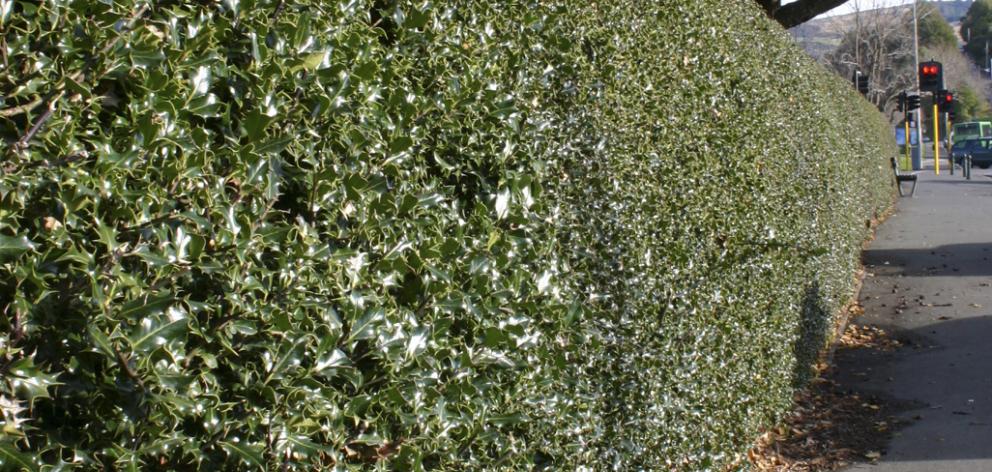
It extends for a distance of about 120m from the entrance at the gardens corner up Opoho Rd, stopping when it reaches the bridge over Lindsay Creek. It is not often noticed as an important plant or anything other than a hedge, although its impact here is enormous. It is tall and wide and, being evergreen, it provides year-round protection from wind, dust and car fumes. It also shuts out the view of the busy road and neighbouring supermarket car park. Importantly, it creates a hidden and secluded safe space for plants and people.
At 116 years old, it is a living heritage feature of the Dunedin Botanic Garden. It was planted in 1908 then moved in 1924 during a boundary realignment to enable the construction of a double tram line to access Opoho. This probably explains why there is a tree growing outside the garden in the footpath.
The word holly is derived from an older name for this plant, which is widespread growing in Europe and nearby parts of Northern Africa and Southwest Asia.
It has been said that holly, Ilex aquifolium, will defend houses from lightening and witchcraft. However, over time it has become widely associated with the Christmas season as a symbol of life. In the northern hemisphere during this time, holly is very decorative with bright red berries.
If you are superstitious at all, it is worth remembering that although holly is believed to be a lucky tree, beware, as it is considered bad luck to bring holly into the house before Christmas Eve and it is essential to remove it before the 12th night.
Garden Life is produced by Dunedin Botanic Garden. For further information contact Marianne Groothuis.













